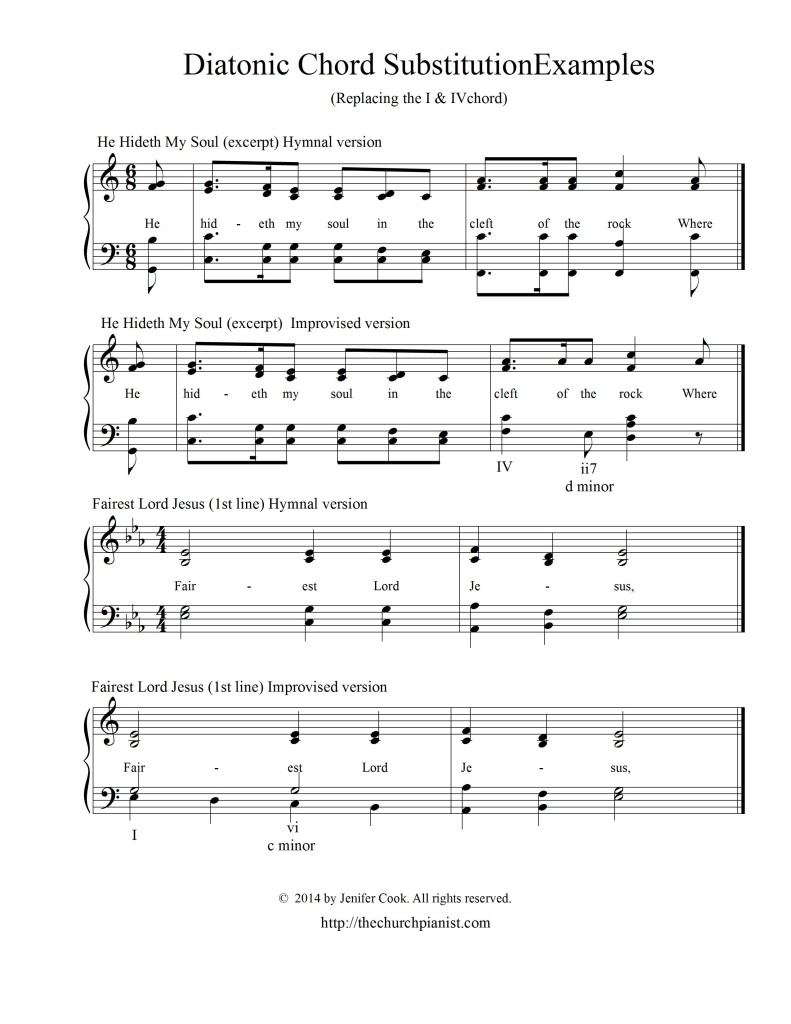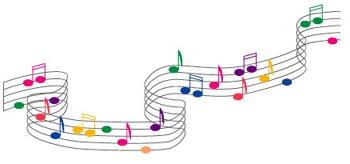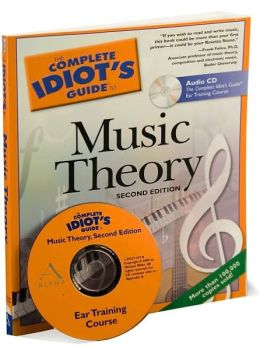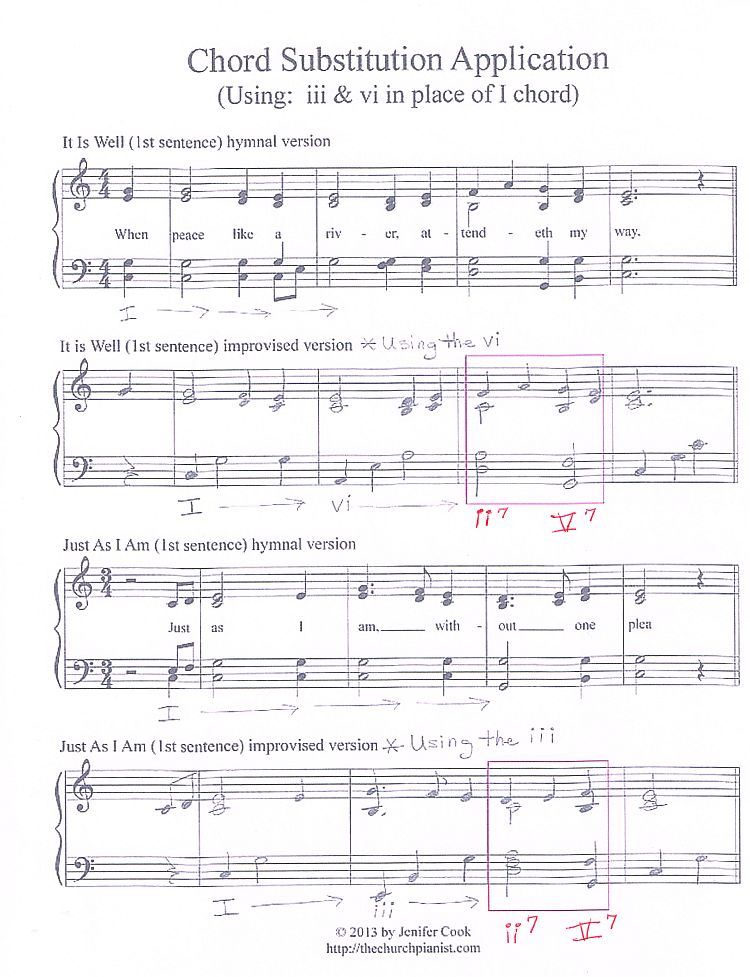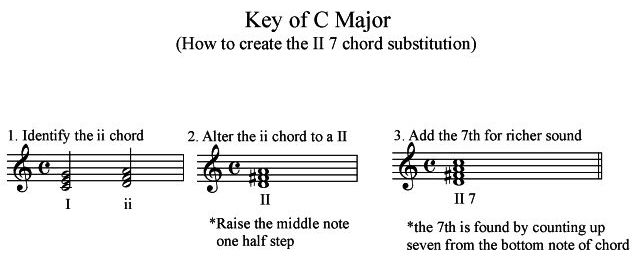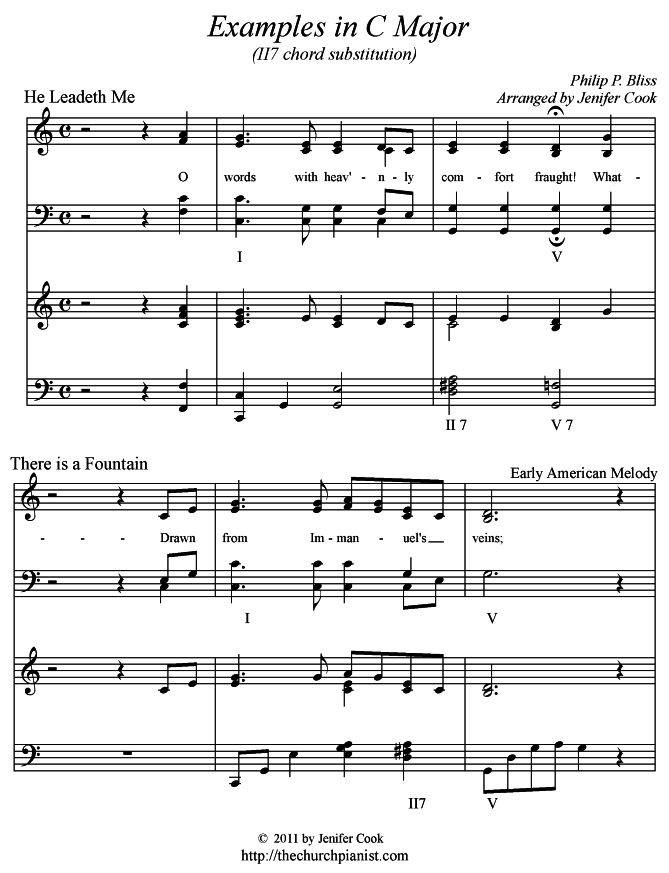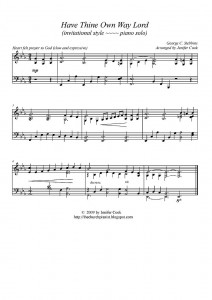Reviewing Lesson Two
Here are the essential tools I’ve covered so far as prerequisites to adding chord substitutions:
Understanding the major scale (C scale was our example for ease of application) There are 8 notes in a scale.
The scale-based triads (3 note chord)
Term: Interval (distance between two notes)
Answers to lesson two’s intervals:
*D to F (3rd)
*C to G (5th)
*B to G (6th)
*G to C (4th)
Lesson Three: Half and Whole Steps
What if I play a D to the next F#…is that still a 3rd interval? Yes it is! So…what’s the difference between a D to F and a D to F#? Well, a D to F is a minor 3rd and a D to F# sharp is a Major 3rd. How do I know that? I learned about half and whole steps; used to create minor and major 3rds.
(The following lesson must be understood before you can identify minor and major 3rds.)
A half step is from one note to the very next (closest) note. For example: a C to C# is one half step. Or….E to F is a half step…no key between the moves.
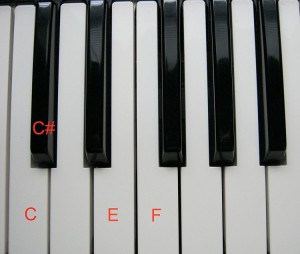
A whole step is from one note to the next neighbor note…such as C to D or F# to G#. (A whole step has one key between its two notes)
C to D has a black key between them. F# to G# has a white key between them and B flat to C has a white key between them.
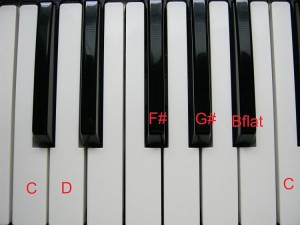
Very important lesson to remember!
Several Reasons why:
Because scales are made up of half and whole step patterns
What if someone says….”transpose up a half step”…must understand!
Major and minor chords are determined by number of 1/2 steps! (next lesson)
Understanding of sharp and flat notes (they move by 1/2 steps)

Now for the application of half and whole steps…
A minor 3rd = 3 half steps
A Major 3rd = 4 half steps
Assignment:
Identify the 3rds below the example as either minor or Major
Example: F to A = Major 3rd
(the numbers indicate the half step moves)
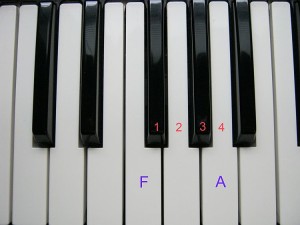
Hint: 1st half step counts after first note
D flat to F
C to E flat
G# to B
B to D#

Special Note!
Learning these theory lessons WILL help you know how to add chord substitutions. Just hang in there and take good notes 😉
